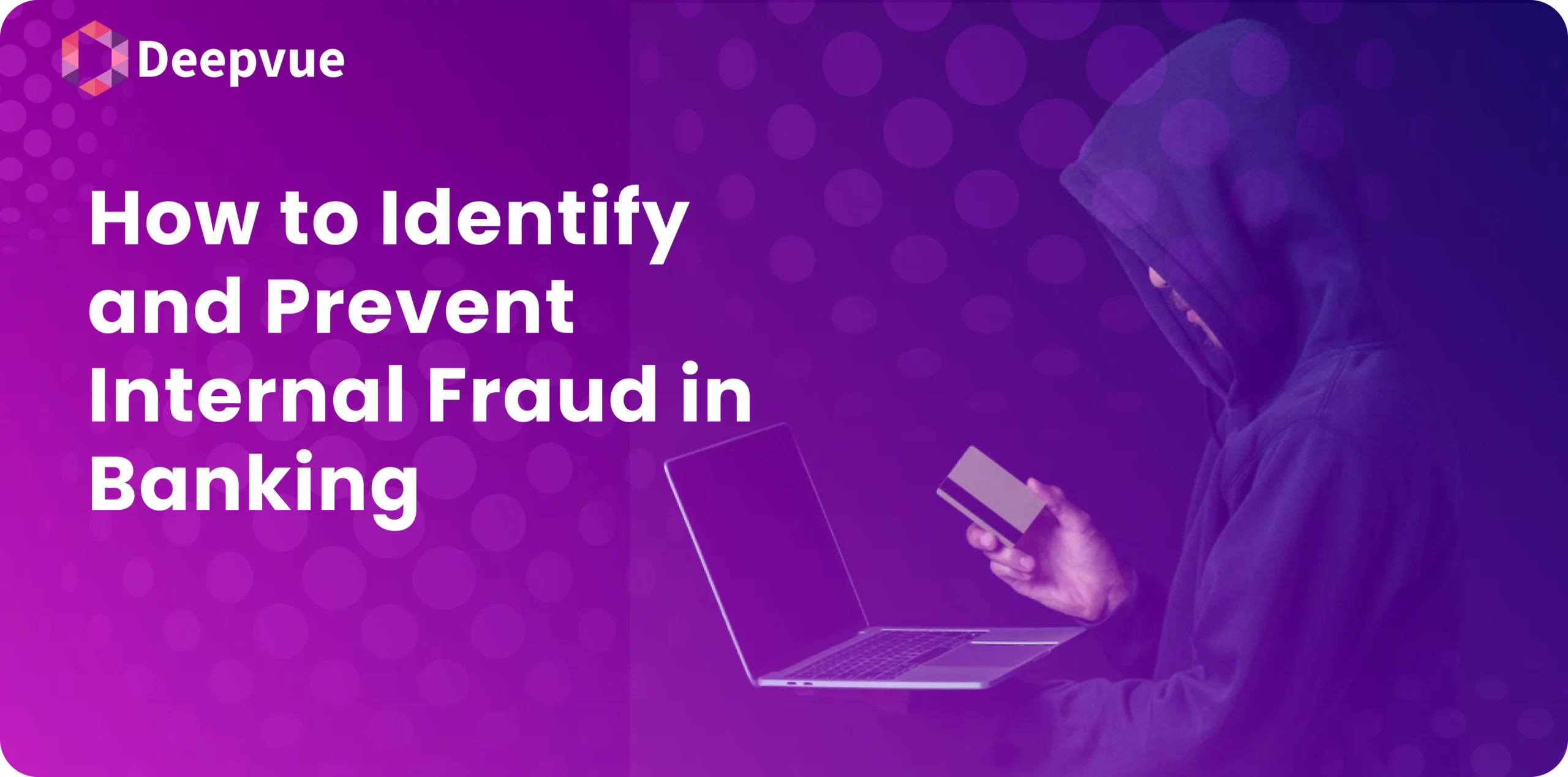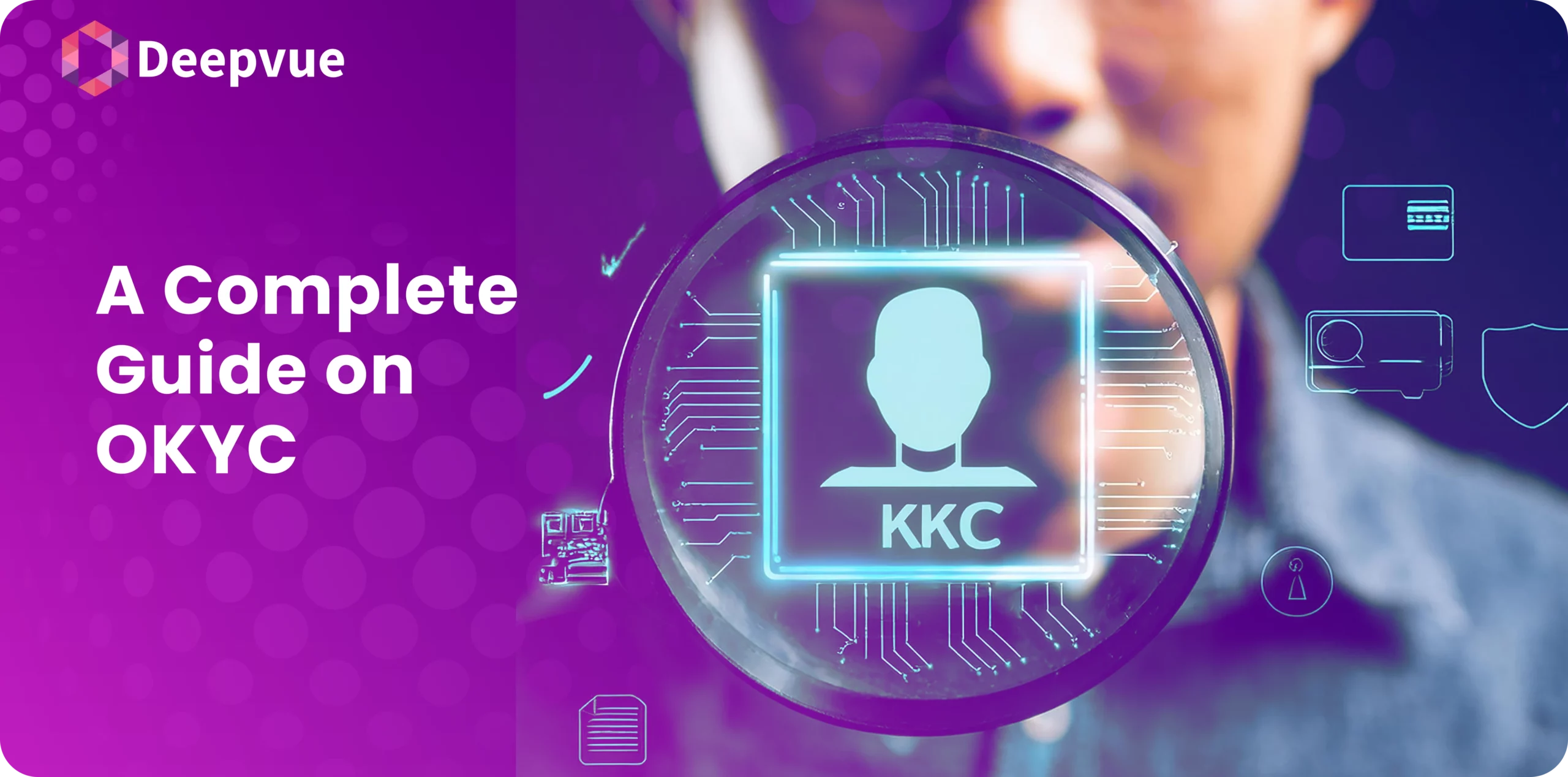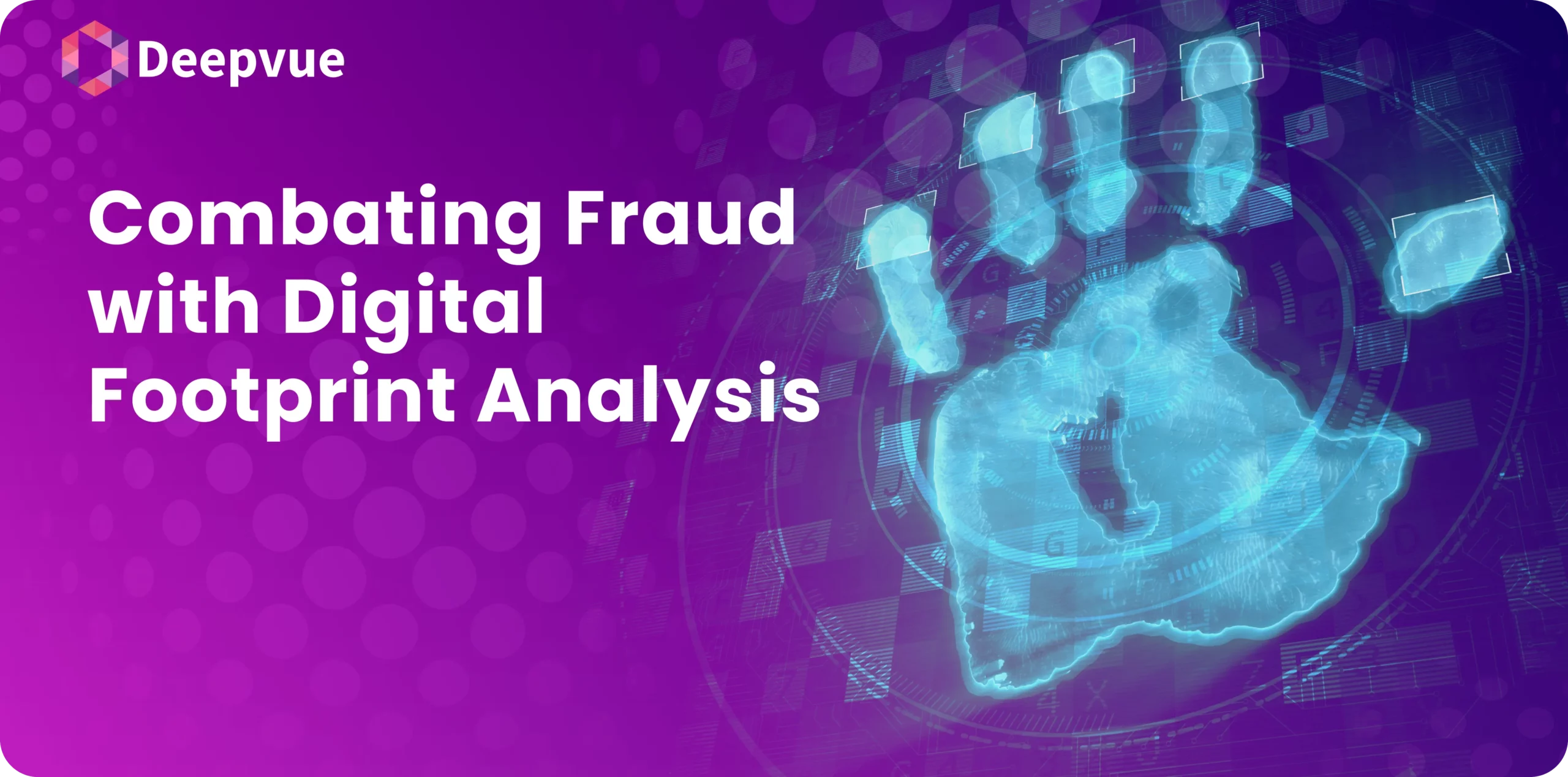Walking into your favorite bank, you trust that your hard-earned money is safe. But what if something more is happening behind those shiny counters and friendly smiles? Internal banking fraud is becoming a serious affair undermining the strongest financial institutions and putting customers at risk.
Internal fraud churns up the banking world faster than the words “unauthorized withdrawal!”. According to the Association of Certified Fraud Examiners, banks on average, account for losses of around 5% of their revenues due to those little games of fraudsters. That’s not pocket change-it’s a hefty sum that claims our attention.
This requires high alertness on the part of banks in detection. We will analyze detection skills with slight indicators of internal fraud, tactics committed by perpetrators, and strategies to counter them in this blog post.
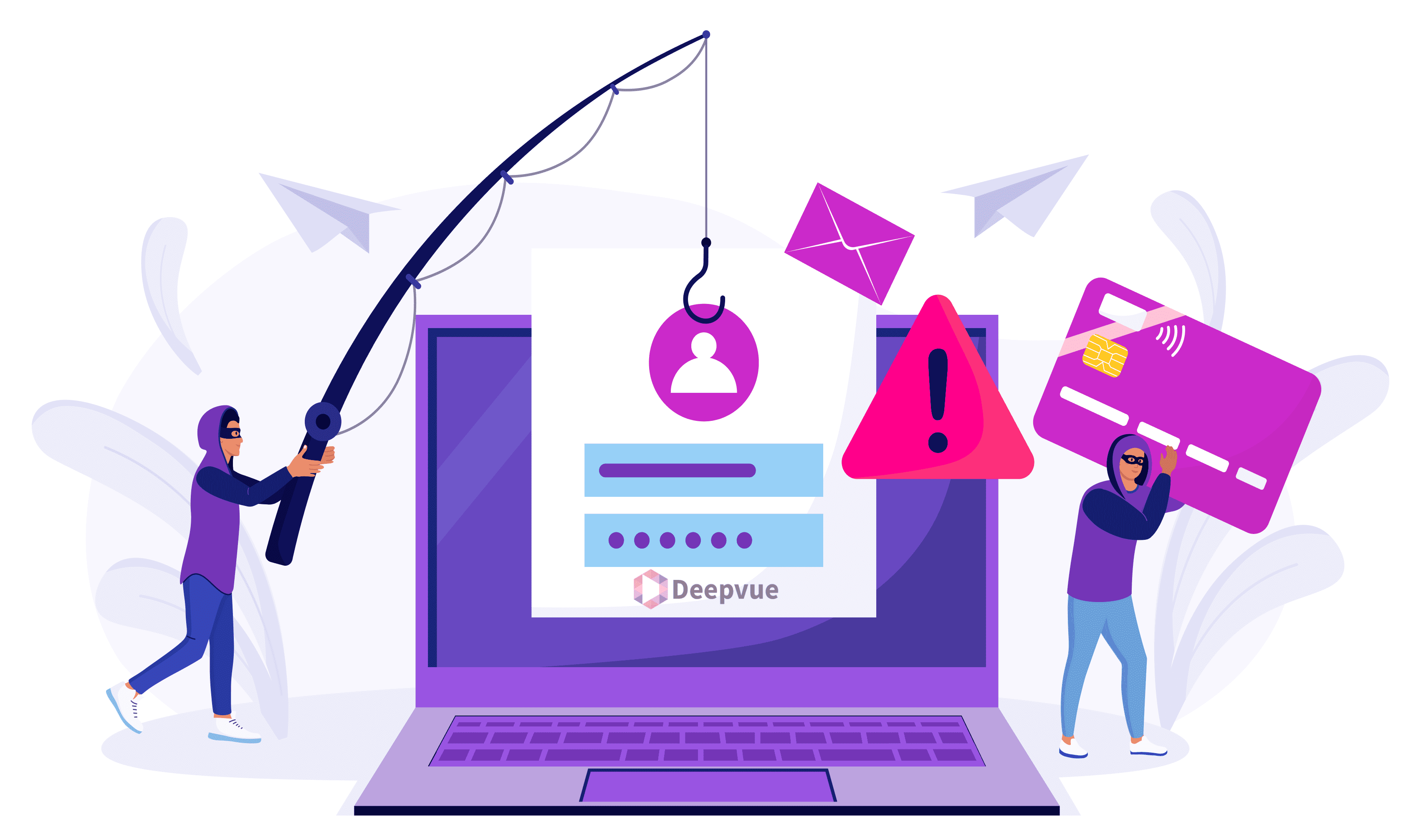
From Sneaky Thieves to Data Bandits: The Many Faces of Internal Fraud
- Employee Theft: Employee theft refers to illegal activities in which employees take money or property. It may range from petty fraud.
- Fraudulent Transactions: In fraudulent transactions, the employee often creates fictitious accounts or changes the transaction details to siphon funds.
- Employee Collusion: Some of the fraud cases require that employees be involved as participants. It creates a perceived veil of secrecy and concealment, which is tough to penetrate.
- Misuse of Customer Information: The banking sector is a treasure trove for sensitive information, as misuse of information related to personal gain by allowing employees to access such information is common.
Sneaky Signals: Identifying Warning Signs of Internal Fraud
Bank employee fraud detection at early stages is the only way to prevent internal fraud. Following are some key warning signs that banks must look out for:
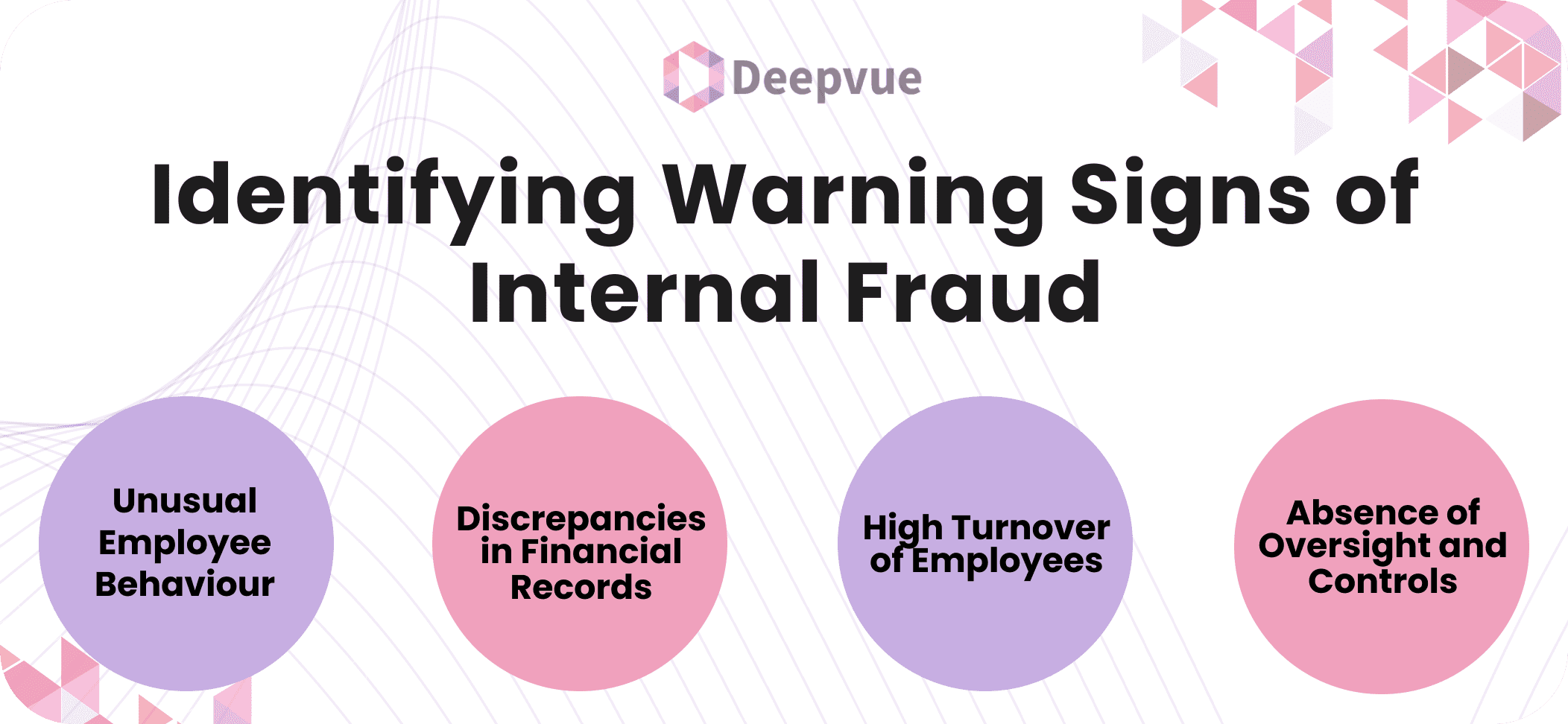
- Unusual Employee Behaviour
Unusual changes in behavior are a huge indicator of fraudulent ones. An employee may become severely stressed, secretive about work, or develop suddenly, whereby their lifestyles change, such as driving an expensive car or taking grand vacations. These behaviors often denote that an employee is involved in bad behavior.
- Discrepancies in Financial Records
Financial records auditing should be done periodically. Inspect all anomalies or inconsistencies within the transaction accounts, for example, unusual withdrawal patterns or deposits, reported figures being mismatched, and unexplained variance between budgeted and actual revenue. These are early indicators of fraudulent activity.
- High Turnover of Employees
There will be an abrupt increase in employee turnover due to an unhealthy work environment and suspicions of fraud. The leaving staff might take confidential information out of the organization, thus increasing fraud in the future.
- Absence of Oversight and Controls
A weak internal control environment invites fraud. If employees are not bound to be answerable for their activities or if transactions lack internal oversight, fraud risk becomes very high. An effective way to discover weaknesses before fraudsters exploit the weakness is through the review of the internal control regularly.
The Prevention Playbook: Strategies That Outsmart the Tricksters
- Establishing Internal Controls
One of the first lines of defense against internal fraud is strong internal controls. Among them, duties are segregated among employees so that no one person controls any aspect of a financial transaction from end to end. Bank employee fraud detection can be enhanced overnight with regular audits and surprise inspections.
- Employee Training and Awareness Programs
Regular training of the staff about possible risks and warning signs of insider fraud will empower employees to recognize suspicious behavior and understand mechanisms for reporting. Creating a culture of transparency and accountability will probably discourage possible fraud.
- Utilizing Technology and Analytics
Advancements in technology have driven change since banks can apply data analytics and machine learning algorithms to monitor transactions in real time and check for anomalies that may denote fraudulent transactions. It can analyze gigasize files which may not be easily detectable by human auditors.
- Encouraging a Whistleblower Policy
A well-articulated whistleblowing policy would make employees feel safe to raise any suspicious behavior for fear of reaction. Providing reporting means anonymously, like a hotline and secure online applications will encourage the employees to speak about their concerns. With this information, the transparency of bank employee fraud detection will increase the chances of catching and stopping fraud early on.
Turning the Tables: Response and Investigation Protocols
Despite best efforts, some cases of fraud will slip through the cracks. As such, it is critical to have a good plan in place for response:
- Immediate Steps in Case of Fraud Detection
As soon as fraud is detected, action must be taken to contain the problem. This involves freezing the accounts involved and securing the evidence that has been found. Relevant authorities need to be notified immediately. Specific guidelines for dealing with a suspected fraud avoid as much damage as possible.
- Engage Law Enforcement and Legal Counsel
In major fraud cases, it may become necessary to involve law enforcement. Moreover, cooperating with legal counsel will help ensure that the investigation was properly done and that all proper legal actions ensued. Coordination with this team would also be an important step in retrieving lost assets.
- Review and Strengthen Policies After the Incident
Banks must review and analyze their policies and procedures in the aftermath of the fraud incident. It will be clear how the fraud occurred and what weaknesses it exploited so that future defenses against fraud will be tightened. This may involve updating training programs, improving internal controls, and enhancing oversight measures.
Winning the Game: Outwit, Outplay, Outlast Fraud
Internal fraud might seem like something out of a dramatic heist movie, but it’s a real and costly problem for banks. The good news? You don’t need to be a Sherlock Holmes or hire a team of super-sleuths to sniff out fraudsters. Incorporating strong internal controls, fostering a culture of transparency, and utilizing cutting-edge technology are essential steps in bank employee fraud detection. And here’s where Deepvue comes into play!
Our suite of APIs is designed to be your ultimate sidekick in this battle. Our identity verification API and document verification API are designed to give banks the upper hand in fraud prevention, cutting through the complexities. Take our Passive Liveness Check API, it’s like having a super-slick detective on your payroll 24/7 to verify identities. And our Face Match API? It ensures that employees (and customers) are exactly who they say they are by matching their current photos with historical images with laser-like precision.
FAQ:
What steps can banks take to prevent internal fraud?
Banks can ensure strong internal controls, segregate duties, have books regularly audited, provide employee fraud awareness training, and use technology fraud detection software or APIs to monitor suspicious transactions.
How does employee training help prevent internal fraud?
Employee training raises fraud awareness, educates the staff on early warning signs, and enhances the motivation of staff to report any suspicions to the appropriate reporting channels, such as a whistleblower policy.
What is the role of a whistleblower policy in preventing fraud?
A whistleblower policy provides employees with a means of making safely and anonymously available a report of suspicious or unethical activities without fear of retribution, thus providing an essential tool for detecting fraud early.
What should banks do if internal fraud is detected?
Banks should immediately investigate the incident, freeze related accounts, retain records of evidence, and contact legal counsel or law enforcement. They should review and update internal controls to prevent further incidents.
How can Deepvue’s API solutions help prevent internal fraud in banking?
With Deepvue, you can be sure that your bank is fortified against internal fraud. Our APIs extensive set of APIs like identity verification, document verification, account aggregator, face match, and passive facial liveness are built to detect, deter, and defeat fraud.


